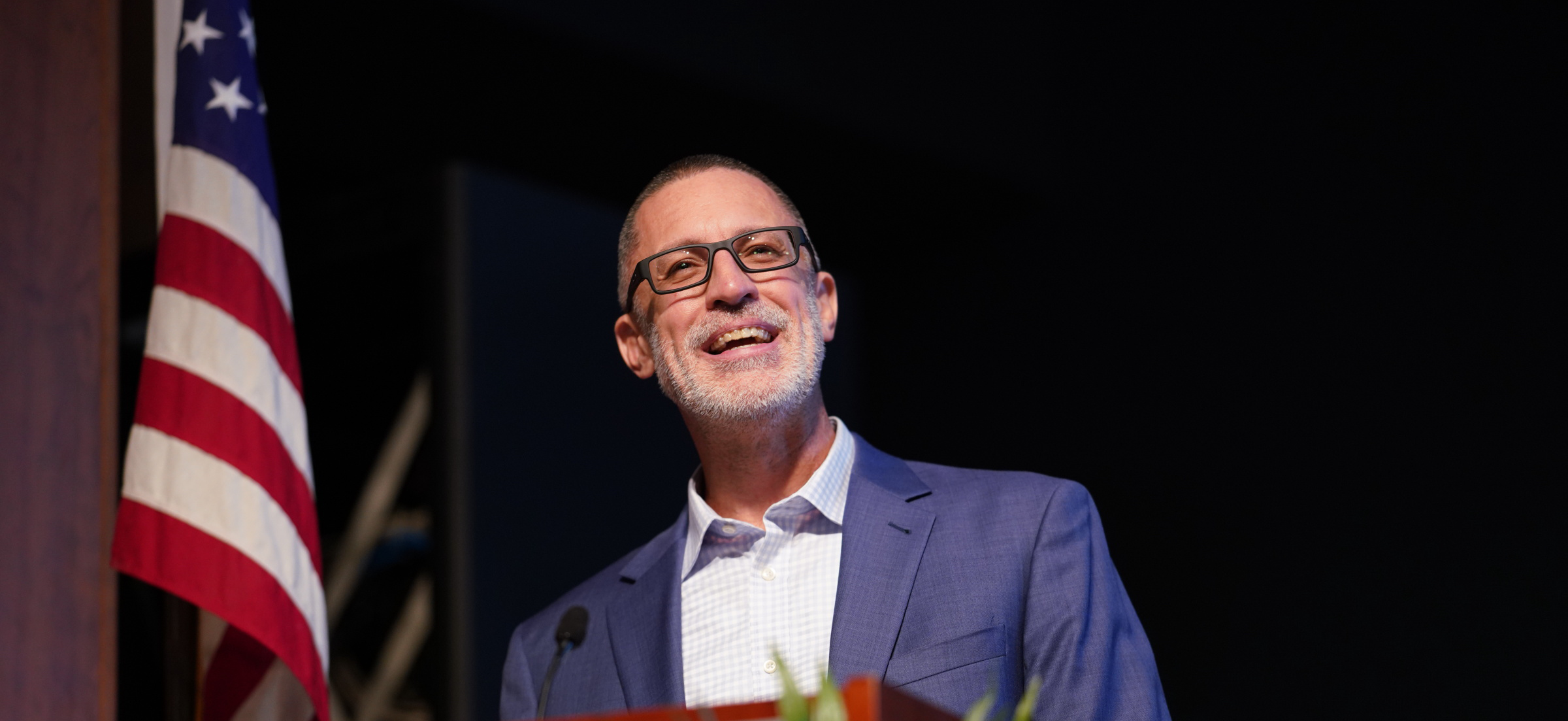
On Nov. 3, 2022, AIA Virginia announced architect Paul Battaglia, AIA, will be its next Executive Vice President bringing more than 25 years of practice, teaching, administration, and business development experience to lead the 2,500-member organization. Since 2011, Battaglia has been at Clark Nexsen, in recent years as a principal engaged in business development, where has specialized in education, research, outreach, and strategic partnerships. Battaglia has also held faculty positions at Hampton University, North Carolina State College of Design, VCU, and Virginia Tech, where he earned both bachelor’s and master’s degrees in architecture.
What are some of the broad themes of 25 years of practice and teaching that might come to bear on leading AIA Virginia?
One of the things that I’ve been consistently impressed with in Virginia is the breadth of architecture and so many different perspectives among its designers and architects. There are also so many ways to pivot in architecture and, for me, at the highest level, that pivot between academia and practice has been critical for me to identify possibilities.
My wife, Laura, is also an architect — and she’s teaching full time at VCU in the interior design department — and I know she sees it, too: there’s fluidity between practice and teaching, and it requires a certain openness. For some people there’s a gap, but for me it is seamless, and you must be open to that. In each of those modes, you can continue to learn about architecture — and that, to me, has been fascinating.
I would say, though, that there’s a major difference between teaching and practice, which is to say that risk and the appreciation for failure aren’t the same. You might look to encounter risk and failure in architecture’s academy to test something or learn something, and you might appreciate risk as a practitioner, but failure there just isn’t an option. I happen to be at a large firm now, but I’ve worked at small firms before — and I’ve pursued those two types of firms intentionally. For one, I wanted to see where I’d feel more comfortable. But, I also did it because I wanted those experiences to inform my teaching, so I can help others understand all of the great ways architecture lets you pivot in your career.
You’ve served on several AIA Virginia committees and initiatives, including Virginia Design Forum, Justice Equity Diversity Inclusion Committee (J.E.D.I.), and the Large Firm Roundtable, which you’ve chaired since 2017. How do stakeholder groups offer a window into member needs today?
AIA Virginia needs to always be sincere in asking members what they need, and these groups often represent singular needs — or a collection of needs. It’s about forging and maintaining a relationship between the organization and the member, and the nature of that relationship must be about honest feedback.
How is consensus a foundation for the work that AIA Virginia must do?
At its best, consensus guards against the extreme positions, but just because more people think something is good doesn’t mean it’s the greatest good. Ultimately, that’s the responsibility of leadership to take things under advisement and make a decision — and a consensus-based process can offer that leader a reliable picture.
What does this moment mean right now for Virginia architects? What’s important for the profession here, across all five of its local chapters?
Several things. One, if a recent graduate, for instance, goes forward with an architecture career, they will contribute to the built environment. That’s a huge responsibility. Architecture that’s done with a minimal degree of competency achieves health, safety, and wellness, but architecture inspires, too — it makes people travel across the world to seek it out. And then there is the fact that, by its nature, the discipline of architecture offers a lot. To see the world from an architectural point of view, it means that even beyond practice, there’s a value in the architectural approach: identifying a vision of something good worth achieving and working collaboratively to get there.
Since 1914, AIA Virginia (and formerly the Virginia Society AIA) has represented the professional interests of architects and allied professionals in the Commonwealth of Virginia. Learn more at aiava.org
William Richards is Editorial Director of Team Three, an editorial and creative consultancy based in Washington, DC.
